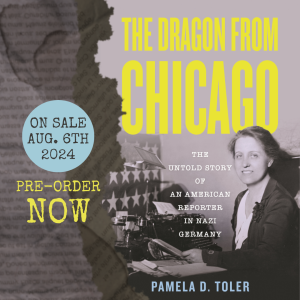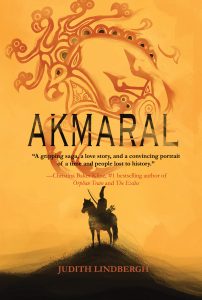“The Blond Hans”
One of the ideas that appears over and over again in the statements made by her contemporaries about Sigrid Schultz is that she “knew everyone.” Working through her letters and draft memoirs, it certainly seemed to be true. I found correspondence from people like novelist Paul Gallico and dancer and choreographer Ted Shawn that made my fan girl heart flutter.
I quickly learned to track down names I didn’t recognize, especially those of German performers and artists. Most of them were famous at the time. And even if they didn’t make it into the final version of the book,* learning about them gave me a richer picture of the world Sigrid moved in.
I had a hard time reducing German actor Hans Albers (1891-1960) down to a single walk-on line.
Albers was a cabaret comic and singer, whose 1928 revue Zieh Dich Aus (Undress Yourself) was one of the hottest shows in Berlin, both in terms of popularity and what Schultz called “spiciness.” He was famous for his clever improvising as well as his charismatic stage presence.
Albers went on to become one of the most popular German movie star between 1930 and his death in 1960. After parts in more than 100 silent films, he starred in the first German talking picture, The Night Belongs to Us (1929)—a romance with a race car theme. Later that year, he had an important role in The Blue Angel, the film which made Marlene Dietrich an international star. Albers found his own breakout role in The Copper (1930), a German-British crime film in which he played Scotland Yard Sergeant Harry Cross.** He became known for roles as a dashing hero in adventure movies and occasional westerns.***
When the Nazis came to power, “the blond Hans,” as he was known, was so popular that the Nazi regime overlooked his long-standing relationship with Jewish actress Hansi Burg for several years.**** Despite the fact that he frequently opposed the Nazis, his acting career flourished under the Third Reich. Instead of playing overtly Nazi heroes, Albers took roles as heroic Germans of the past and romantic leads. After the war, he moved successfully into roles as wise, fatherly figures.
*So many stories got cut in the final big revision before I turned my manuscript in last May. This happens when you need to reduce your word count by 40,000.
**The film was remade in 1958, with Albers once again the the leading role.
*** Thanks to novelist Karl May, pulp-styleWestern adventure were very popular in Germany in the years between the two world wars.
****When it became too dangerous for her to stay in Germany, Burg fled Germany with some help from Sigrid, who arranged for her to marry a Norwegian, Erich Blydt, thereby making her eligible for a visa to Norway. Burg returned to Germany, and Albers, after the war, again with help from Sigrid, who undertook what she described as “a kind of Cupid act.”
****
And speaking of Sigrid Schultz, The Dragon From Chicago is available for pre-order wherever you buy your books. You can get a signed copy for yourself or your favorite tough cookie from my neighborhood bookstore, the Seminary Coop: https://www.semcoop.com/dragon-chicago-untold-story-american-reporter-nazi-germany . Use the special instructions box to tell me how you want it signed.
A Q & A with Historical Novelist Judith Lindbergh
When I saw the book teaser for Judith Lindbergh’s newest novel, I was hooked:
A nomad woman warrior of the Central Asian steppes must make peace with making war. Akmaral is a foray into the ancient past, inspired by Greek myths of Amazon women warriors and archaeology that proves that they were real.
Judith is not a newcomer to writing fiction about women in the distant past. Her debut novel, The Thrall’s Tale, about women in the first Viking Age settlement in Greenland, was an IndieBound Pick, a Borders Original Voices Selection, and praised by Pulitzer Prize winners Geraldine Brooks and Robert Olen Butler. She received a 2024 Fellowship from the New Jersey State Council on the Arts. Judith is the Founder/Director of The Writers Circle, a creative writing center based in New Jersey. She contributed to the Smithsonian Institution’s exhibition Vikings: The Norse Atlantic Saga and provided expert commentary on two documentary series for the History Channel, including MANKIND: The Story of All of Us. (Which gave us a “wow, small world!” moment since I wrote the companion book for the series.)
Akmaral is coming out May 7 (today!) I’m delighted to have her here on the Margins to talk about the book and how she wrote it.
What inspired you to write a story about a nomadic woman warrior of the ancient Asian steppes?
The inspiration for Akmaral began with a PBS documentary about the amazing Siberian Ice Maiden. She was discovered in the Altai Mountains of Central Asia, a stunning landscape of high, lonely mountain pastures, which is probably why she laid virtually untouched in the permafrost for over 2400 years. Her body was so well-preserved that even her skin was intact, covered with ornate tattoos. Most were stylized wild animals, including a “flying deer” on her shoulder—an iconic symbol that now graces the cover of my book. Archaeologists also found a bronze mirror in her grave. For these ancient people, mirrors weren’t objects of vanity. They seem to indicate an important spiritual leader, perhaps even a shamaness.
Using DNA testing, they discovered that the Ice Maiden was actually European, despite being buried thousands of miles away. This intriguing breadcrumb provided a direct, biological connection to the Amazons of ancient Greece. The historian Herodotus tells that, after their defeat in the Trojan War, the Amazons joined with a group of Scythian warriors and eventually formed a new tribe, the Sauromatae. That’s how the Amazons became my characters’ ancestors.
But I wasn’t finished following the research’s trail. Akmaral truly took form when I learned about the “Issyk Gold Man” discovered in Kazakhstan in the 1960s. Along with thousands of gold, arrowhead-shaped ornaments, this body was buried with weaponry, so archaeologists assumed that it was male. But more recent scholars believe that the warrior may have been female. This possibility set my imagination on fire. Soon I discovered more hard evidence of women warriors all across the steppes. As I put together each remarkable discovery and countless other artifacts, Akmaral—a woman warrior and destined leader of her people—took shape in my mind.
What kinds of sources did you rely on to create rich fictional characters from a largely undocumented period of history?
Akmaral’s group, the Sauromatae, are part of a larger nomadic culture, the Scythians, who lived on the steppes from modern day Ukraine all the way to Mongolia and southern Siberia. The Scythians left no written record, so we only know about them through what others wrote down. Most of what we know comes to us from Herodotus who is often called the world’s first historian. But some scholars question how much of what he wrote was fact and how much was hearsay, skewed by the Greek perspective that Amazons were salacious and aberrant, warnings to Greek women who were expected to stay home and care for the children.
With so little, possibly unreliable documentary evidence, I didn’t have much to work with. But my inspiration hadn’t started with Herodotus. I knew that archaeology would help me find a story in the bones.
I combed through countless archaeological reports on kurgan (mound) burials from the Scythian period from around 800 – 300 BCE. I visited museums and perused exhibition catalogues when I couldn’t see the artifacts in person. I toured the virtual galleries of The Hermitage’s extraordinary collection of Scythian and Altai Bronze and Iron Age materials. And I used Google Earth to zoom down on ground level. (At the time, my children were young and I couldn’t leave them to travel to Central Asia myself.)
Beyond artifacts and landscape, I turned to modern descendants of these Iron Age nomad tribes for my characters’ daily life. People still practice traditional horse herding in Mongolia and Kazakhstan. And they celebrate archery, wrestling, and eagle hunting in their annual nomad games—a sort of Olympics for Central Asian traditional culture. Hunting and horse-back archery can be traced all the way back to prehistoric times through petroglyphs scattered around the region.
Finally, to give Akmaral authentic spiritual roots, I turned to the Bronze Age deer stones, mysterious vertical pillars carved with the same “flying deer” shapes as the Siberian Ice Maiden’s iconic tattoo. And I borrowed traditions from shamanism—a traditional healing practice connected to ancestor workshop that are still practiced by modern people in these regions today.
How do you walk the line between historical fact and fiction in your novels?
I work very hard to respect the research and not speculate beyond what seems reflected in the stones and bones. But relying on archaeology doesn’t provide many historical events to anchor my plot. I leaned on Herodotus’s tale of the Sauromatae’s origins to construct a backstory for Akmaral’s people. Also useful was the requirement that an Amazon warrior must kill in battle before she could bear a child. That one thought anchored the plot for the first act of my novel, where my characters must cope with this heavy responsibility.
I also wanted to honor the evidence of the burials that inspired Akmaral. I knew that the Ice Maiden had died young; she was only around thirty. And yet she was buried with six horses—a huge sacrifice—and countless other valuable grave goods. This shows that her death was a great loss and that she was very important to her people. Beyond that, I had no idea what she went through. Here’s where fiction comes in, as I use these archaeological anchors to tie together the artifacts and research until they begin to form characters and a story in my mind.
While this particular interpretation of the archaeology is clearly my own, the creativity comes in how I bring it to life. Akmaral is neither the Siberian Ice Maiden nor the Issyk Gold Man nor any of the other burials I studied. She is her own person with struggles that are unique to the circumstances and relationships I invented for her. The facts create the backdrop of culture, contacts, landscape, and belief, but the story is all her own.
What was most exciting about researching women in this period in history?
What I loved about writing Akmaral was the opportunity to consider a world where women were implicit equals. How would a world like that work? And what would be the consequences of that unique standing?
Since the beginning of recorded history and in countless cultures, women have rarely had agency over their own lives. Except for a few outliers—extraordinary women who broke barriers and defied social norms to achieve greatness or notoriety.
But Akmaral presented me with a unique opportunity to focus on a time and place when women were not marginalized. It is clear from the archaeology that these women were trained in military skills. Their thighbones are bowed from lifetimes spent on horseback and their finger bones are contorted from drawing their bows. Many died of battle wounds and were buried with their weaponry. This is undeniable, physical evidence that these warrior women existed. They were not fantasy heroines. And they weren’t anomalies. There are simply too many burials to claim that. That is what makes Akmaral’s setting and story remarkable.
What work of women's history (fictional or non-fiction) have you read lately that you loved? Or for that matter, what work of women's history have you loved in any format?
I’m thinking first of general nonfiction for readers of Akmaral who might want to dig deeper. I adored Adrienne Mayor’s The Amazons, which is an in-depth study of evidence of women warriors in the ancient world and beyond. Another great book is The Silk Roads by Peter Frankopan which dives into the complex history of the trade routes that have crossed from Europe to Asia for millennia.
As far as fiction, my favorite historical novels of late are Hamnet by Maggie O’Farrell and Hester by Laurie Lico Albanese. Both take the point of view of a woman in the shadow of an important male figure in history and elegantly tell the other side—how women are needed, perhaps loved, but often under-appreciated, neglected, or cast aside—and how the women find their own strength to survive.
***
Interested in learning more about Judith Lindbergh and her work?
Visit her website: https://judithlindbergh.com
Follow her on Instagram: https://www.instagram.com/judithlindbergh/
Follow her on Facebook: https://www.facebook.com/JudithLindberghAuthor
BUY AKMARAL at https://books2read.com/Akmaral
From Portable Pianos to Portable Organs
Earlier this week My Own True Love and I were at an event at an aviation history museum in Poplar Grove, Illinois.* In the course of chatting with the executive director, the GI Steinway (aka the Victory Vertical) came up. The director mentioned that another museum in the community had a portable organ made for army chaplains. Once again down the rabbit hole. I went**

Army chaplain Thomas Eugene West, plays the organ during the singing of a hymn by members of the Japanese-American 422 Division combat team at the Sunday services at Camp Shelby
It turns out that the army was a late player in the production of portable reed pump organs. The first portable organs were invented in the late nineteenth century for use by missionaries,*** traveling evangelists, and, and, at the other end of the musical social spectrum, by traveling musicians who played at dances. The organs had a shorter keyboard than a regular reed organ and folded up into a box roughly the size of a large suitcase.**** Unlike the military pianos produced by Steinway in the Second World War, portable organs were designed to be carried by one strong person: they weighed 90 pounds in the carrying case.
By World War II, Etsey and other organ manufacturers were producing folding organs in olive drab boxes as part of the standard chaplain’s kit and continued to be part of the kit through the Korean War.
*The Poplar Grove Vintage Wings and Wheels Museum: https://www.wingsandwheelsmuseum.org/ If aviation history is your thing and you find yourself in northern Illinois, it’s worth a stop.
**If you decide to follow this up further, I will point out something that confused me for a bit: The Etsey Organ Company was the major manufacturer of reed organs in the United States, portable and otherwise, for roughly 100 years. There are also several listings of chaplain organs on Etsy. You’re welcome.
***The Etsey Organ Company developed an “Acclimatized Organ” in the 1880s which was designed to withstand tropical weather, possibly pioneering some of the techniques used to weatherproof pianos for military use in the Pacific Theater.
****One source describes it as the size of a child’s coffin, which is vivid but misses the point that the organ was portable.









